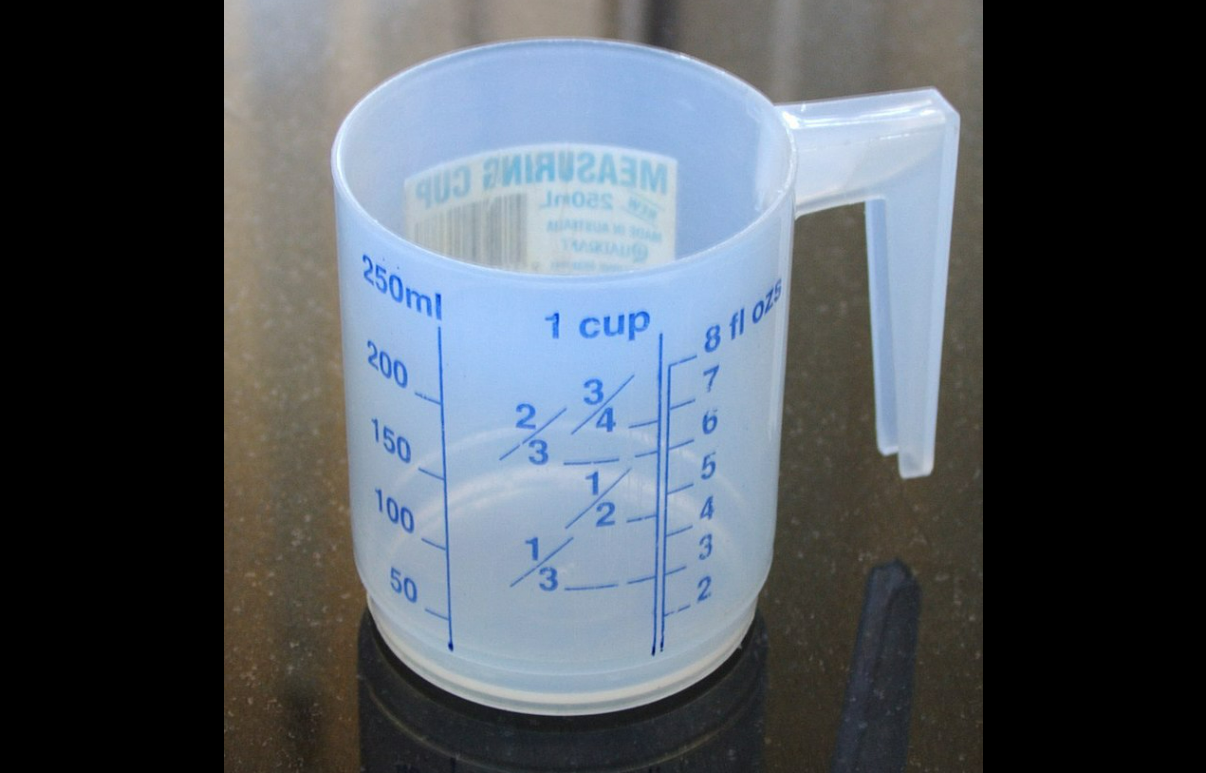How Many Ounces Are in a Cup?

Published on March 13, 2024
There are eight fluid ounces in a cup, and in the realm of cooking and baking, precision is paramount. One of the fundamental aspects of achieving such precision is understanding the conversion of measurement units. Among these, the conversion between ounces and cups stands as a crucial element, especially in recipes where the balance of ingredients can significantly influence the outcome. This article aims to demystify the conversion between ounces and cups, providing a clear guide for both culinary professionals and enthusiasts.
Here are the facts:
- 1 cup = 8 fl oz
Understanding Ounces and Cups
To begin with, it's essential to distinguish between fluid ounces and ounces. Fluid ounces (fl oz) measure volume, commonly used for liquids or fluid substances. On the other hand, ounces (oz) typically refer to weight, used for solid ingredients. The confusion between these two units often arises because they share a common name but measure different aspects of ingredients.
The United States Standard
In the United States, the standard measurement for a cup is based on the customary system, where 1 cup equals 8 fluid ounces. This conversion is straightforward for liquids such as water, milk, and oil, where volume directly correlates to fluid ounces. Thus, when a recipe calls for 1 cup of a liquid ingredient, it equates to 8 fluid ounces.
For dry ingredients, the conversion becomes more complex due to the weight-volume relationship. Different ingredients have different densities, which means a cup of one substance can weigh differently from a cup of another. For example, a cup of flour typically weighs around 4.25 ounces, whereas a cup of sugar weighs about 7 ounces. Therefore, when dealing with dry ingredients, it is crucial to consult specific conversion charts or use kitchen scales for accurate measurements.
International Variations
The standard cup size varies by country, which can lead to confusion in international recipes. For instance, the United Kingdom, Canada, Australia, and New Zealand use slightly different cup measurements, ranging from 200 ml (approximately 6.8 fluid ounces) in the UK to 250 ml (approximately 8.8 fluid ounces) in Australia. These variations necessitate adjustments when converting recipes from one country to another to ensure accuracy.
Practical Application
For culinary professionals and enthusiasts, understanding these conversion principles is fundamental. Here are some practical tips for accurate measurement conversions:
- Use the appropriate measuring tools: For liquids, use measuring cups designed for fluid ounces. For dry ingredients, consider using kitchen scales to weigh ingredients for greater precision.
- Consult conversion charts: When working with dry ingredients or international recipes, refer to conversion charts that account for the specific weight of ingredients or the standard cup sizes of different countries.
- Be mindful of recipe origins: Pay attention to the origin of the recipe to determine which measurement system is being used. This awareness can guide the necessary adjustments for accurate conversions.
The Takeaway
The conversion between ounces and cups in culinary practices is nuanced, influenced by the distinction between fluid ounces and ounces, the density of ingredients, and international variations in standard cup sizes. Understanding these subtleties is crucial for achieving precision in cooking and baking, ensuring the desired outcome of recipes. By employing appropriate measuring tools, consulting conversion charts, and being mindful of recipe origins, culinary enthusiasts can navigate these conversions with confidence and accuracy.
While the foundation of this article is rooted in widely recognized measurement standards, for further reading and specific conversion charts, the following sources are recommended: The United States Department of Agriculture (USDA), Cooks Illustrated, and international culinary guides that provide detailed measurement conversions based on regional standards.
In the pursuit of culinary excellence, mastering the art of measurement conversion is an essential skill, paving the way for creativity, innovation, and perfection in the kitchen.
Category: Science